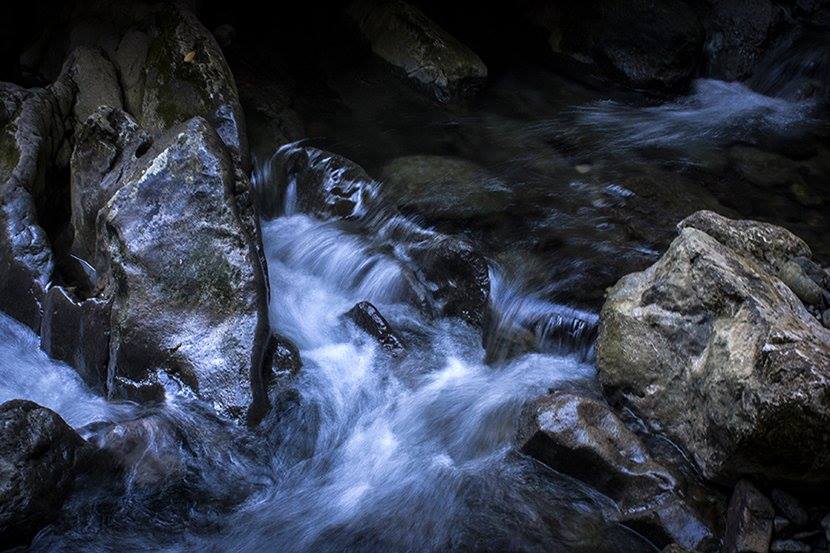THE ‘MOGOTES’ OF JUMAGUA LEGEND, CUBA.
It is a fact, when speaking of “Mogotes” in Cuba, the thinking goes toward Viñales, in the western province of Pinar del Rio, but in the center of the island, in Sagua la Grande, there too, and are considered the only of its type in this region.
The Mogotes de Jumagua are a set of 8 elevated limestone features (Spanish: Mogotes) in the Villa Clara Province of Cuba. They are located within the orographic group Heights of the Northwest in the center-north of the Island of Cuba, two kilometers south-west from the city of Sagua la Grande.
They pinnacles are of Upper Cretaceous age and are fused to each other, presenting enormous caverns. They have great scientific interest due to the enormous concentration of flora and fauna in a relatively reduced area, forming an ecological small barren island. Species in the area are vestige of the old primitive Cuban gold coast forests. It was listed as a nature reserve by the Cuban authorities, protecting an area of 4.79 km2 (1.85 sq mi).
THE LEGEND OF JUMAGUA.
In Afro-Cuban mythology, the “Mother of Waters” is a half-serpent, half-woman creature that lives in rivers and ponds and sometimes drowns people and cattle in the depths of her realm. The sons of the Mother of Waters, the “Guijes”, are dwarf black children who also live in ponds surrounded by jungle and play pranks on travelers. Jumagua’s Mogotes——like every small wild place in Cuba——is no different, and has been attached over centuries with one of the biggest mothers of waters ever seen. Farmers in the 19th century and the beginning of the 20th century claim to have seen her or her tracks in the dirt.
Since the legend of the scorpion turns out to be true, finding a rather big snake in the caverns was one of the purposes of Sabaneque Group. There are few big snakes in Cuba, but the premise on which the group bases its research to prove this theory supposes that a visitor traveling from overseas might have brought an anaconda (or similar snake), since they are very small in juvenile age, that grew up after in the area using the caves as shelter. But so far they have never found any bones or skin to prove that a snake has ever been in the hills.
Another colorful story involves pirates. According to the story, Diabolito or Little Devil (died July 1823) was a 19th-century Cuban pirate. One of the more violent of the era, was one of the main fugitives pursued during later American naval expeditions in the Caribbean during the 1820s. One day a Captain with part of his crew disembarked by the Isabella coast and hid a treasure in the mogotes. Heading back to the coast he noticed his second in command was missing, maybe lost, but very soon the captain, a very smart guy, understood that the second officer actually stayed behind in order to steal the treasure for himself. A shoot-out developed between the pirates and bandits (probably the XO himself) and Diabolito and the pirates had to head back to the coast empty handed. This story, true or not, has inspired many locals to go and try their luck in the hills searching for the lost gold.
Historically, what is fact is that all the caves have been camping places for runaway slaves during the colonial period and for mambi warriors of the “Sagua Brigade” during the independence war of 1895.
Wiki/Various/InternetPhotos/TheCubanHistory.com
The Cuban History, Hollywood.
Arnoldo Varona, Editor.
LA LEYENDA DE LOS ‘MOGOTES’ DE JUMAGUA, CUBA.
Es un hecho, al hablar de “Mogotes” en Cuba, el pensamiento va hacia Viñales, en la occidental provincia de Pinar del Río, pero en el centro de la isla, en Sagua la Grande, allí también, y son considerados la única de su tipo en esta región.
El Mogotes de Jumagua son un conjunto de 8 características calizas elevadas (español: Mogotes) en la provincia de Villa Clara de Cuba. Se encuentran dentro del grupo orográfico Heights del Noroeste, en el centro-norte de la Isla de Cuba, dos kilómetros al suroeste de la ciudad de Sagua la Grande.
Ellos pináculos son mayores de edad Cretácico Superior y se fusionan entre sí, presentando enormes cavernas. Tienen gran interés científico debido a la enorme concentración de flora y fauna en un área relativamente reducida, formando un islote ecológico. Especies de la zona son vestigio de los antiguos bosques de la costa de oro de Cuba primitivos. Fue catalogado como reserva natural por las autoridades cubanas, la protección de un área de 4.79 km2 (1,85 millas cuadradas).
LA LEYENDA DE Jumagua.
En la mitología afrocubana, la “Madre de las Aguas” es un medio-serpiente, mitad mujer criatura que vive en los ríos y estanques y, a veces ahoga la gente y el ganado en las profundidades de su reino. Los hijos de la Madre de las Aguas, los “güijes”, son los niños negros enanos que también viven en estanques rodeados de selva y juegan bromas a los viajeros. Mogotes de Jumagua – como todo lugar pequeño salvaje en Cuba – no es diferente, y ha sido unida durante siglos con una de las más grandes madres de aguas jamás vistos. Los agricultores en el siglo 19 y principios del siglo 20 la reclamación haberla visto o sus huellas en la tierra.
Desde la leyenda del escorpión resulta ser cierto, encontrar un lugar gran serpiente en las cavernas fue uno de los propósitos de Sabaneque Grupo. Hay pocas grandes serpientes en Cuba, pero la premisa en la que el grupo basa su investigación para probar esta teoría supone que un visitante que viaja desde el extranjero podría haber traído una anaconda (o serpiente similar), ya que son muy pequeños en edad juvenil, que creció un después en la zona utilizando las cuevas como refugio. Pero hasta ahora nunca han encontrado los huesos o la piel para demostrar que una serpiente ha estado alguna vez en las colinas.
Otra historia colorida implica piratas. Según la historia, Diabolito o pequeño diablo (muerto en julio 1823) fue un pirata cubano del siglo 19. Uno de los más violentos de la época, fue uno de los principales fugitivos perseguidos durante las expediciones navales americanas posteriores en el Caribe durante la década de 1820. Un día, un capitán con parte de su tripulación desembarcaron en la costa Isabella y escondió un tesoro en los mogotes. De vuelta a la costa se dio cuenta de su segundo al mando faltaba, tal vez perdió, pero muy pronto el capitán, un tipo muy inteligente, entiende que el segundo oficial en realidad se quedó con el fin de robar el tesoro para sí mismo. Un tiroteo se desarrolló entre los piratas y bandidos (probablemente el propio XO) y Diabolito y los piratas tuvo que regresar a la costa con las manos vacías. Esta historia, cierto o no, ha inspirado a muchos lugareños para ir a probar suerte en las colinas en busca del oro perdido.
Históricamente, lo que es cierto es que todas las cuevas han estado acampando lugares para esclavos fugitivos durante el período colonial y para los guerreros mambises de la “Brigada de Sagua” durante la guerra de independencia de 1895.
Wiki / Varios / InternetPhotos / TheCubanHistory.com
La Historia de Cuba, de Hollywood.
Arnoldo Varona, Editor.







